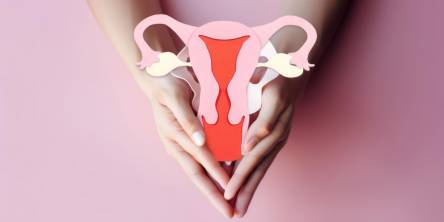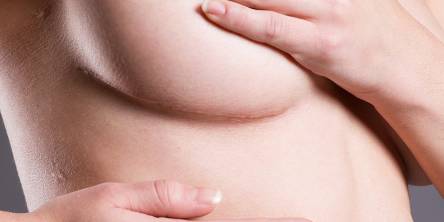What Causes Dark Nipples?

When it comes to nipples and breasts, there is no average shape, size, or color. Each woman is different. The breasts of one woman change even during the course of life in stages such as puberty or menopause, or during pregnancy or breastfeeding.
Nipples are commonly divided, based on appearance, into normal, flat, puffy or inverted. Usually, an inverted nipple doesn´t affect the individual whatsoever physically and the only worry may be on self-opinion and confidence and dealing with that change of the body.
There are many things involving nipples directly that are normal to some and unimaginable to others. For example, in Japan, a common treatment for dark nipples can be makeup! For women in Japan, it is normal and very popular to put makeup on their nipples. Women of Asian descent are known to have darker, brownish nipples. The make-up is supposed to make the nipples look pinker and brighter.
Of course, in the above-mentioned cases, such as menstruation and puberty, the change in color is normal and a doctor´s visit is not necessary. There are however scenarios, in which this change is a signal of a condition that needs to be attended to. The most common causes of dark nipples are:
Birth control pills
Since they contain the synthetic version of estrogen and progesterone, birth control pills affect a woman´s body, by causing a hormonal change. Its main function is to prevent a pregnancy but comes with its side effects. Dark nipples are one of them, but this doesn´t need to be treated in any way. Usually, once the woman stops using the oral contraceptive, the darkening should clear up. Keep in mind that birth control pills can’t be used as an abortion option.
Melasma
Birth control pills are also known to be a possible cause of melasma. Melasma is a skin condition, characterized by darker patches and in some cases, this patch can be found around the nipple area. Most commonly, these dark patches appear on the chin, forehead, around the cheeks or nose. The condition occurs more in women than in men and is, therefore, other known as the mask of pregnancy, as many of the affected women are pregnant.
Melasma´s most common cause is an increased sensitivity to hormones such as estrogen and progesterone. This is why, just like with darker nipples, any hormonal change is a risk factor for melasma. Pregnancy, menstruation, birth control pills, or hormone therapy, are all possible triggers of melasma. It is also believed that an increased exposure to the sun can lead to melasma, due to the ultraviolet rays and its effects on the skin.
Puberty
Another big, but natural hormone change occurs during puberty. It´s when the estrogen levels are at their highest point and when the ovaries release the hormone, causing the breasts to begin developing. During this change, the nipples may change in color, as well as elevate from the skin surrounding it.
Pregnancy
Pregnancy also leads to a hormonal change within the body, as it produces naturally more estrogen and progesterone. Milk-production is being prepared during this stage and the breasts start to change in size. They become sorer and, in most cases, become darker. Some tend to believe, that this is a natural process, there to help the newborn detect more easily their food source. Babies have still undeveloped eyesight and dark nipples after birth are believed to be an evolutionary “trick”.
There have been cases, where individuals had many, tiny hairs that show around the nipple, darker than any other hair in the body. So tiny, that it´s sometimes left undetected as such and individuals may get the visual conclusion that the nipples are darker. This hair growth is just as normal as any other in the body and should not be seen as an alarm. It has been proved that all adult individuals have hair around the nipple area. The only difference is that in some individuals these hairs can only be spotted with a microscope.
Menstrual cycle
Women also go through a hormonal change during menstruation. During this time, the hormone levels fly up in preparation to release the egg. Similarly, the breasts change and, in some cases, this may lead to darker nipples during ovulation. This usually clears up at the end of the cycle.
Although in most cases, a change in color isn´t a reason to worry, there is a serious condition that initially starts to show itself by darker nipples.
Paget´s disease
Paget´s disease of the breast is a cancer type that usually starts developing in the nipple. If you notice darker nipples, you should pay attention to whether any other Paget´s disease symptom is present. The symptoms may be a nipple that is more flattened, itching or a feeling of tingling, a crusty skin around the nipple area and in some cases even a discharge of the nipple, usually yellow or bloody.
Paget´s disease commonly affects older individuals, rather than ones in puberty. However, it can and in rare cases affects teenagers during puberty. If you´re experiencing any of the symptoms above, it is best to visit your doctor and have that checked out! Paget´s disease is believed to be caused by a tumor of the breasts that spreads its cancerogenic cells through the milk ducts to the nipple.
Patients who have Paget´s disease of the nipple almost in all cases also have a tumor in the same breast. Paget´s disease is in most cases treated through a removal of the affected nipple and a radiation of the breast, to make sure all cancer cells are getting fought against. In some cases, especially when combined with a tumor, a biopsy may be necessary for the trial to remove the cancer cells.
How well the treatment will work depends on the stage of Paget´s disease the therapy began. It makes a big difference whether Paget´s disease is combined with a tumor or not and if breast cancer is present.
It is, therefore, most important to consult a physician upon noticing symptoms that differ from your normal state of being. An early diagnosis makes a big difference when it comes to breast or nipple cancer or many other conditions!
Similar Articles
If you have hip discomfort during perimenopause or beyond menopause, there may be a relationship. Reduced estrogen levels might raise your chance of getting gluteal tendinopathy. They may also contribute to osteoarthritis, which can damage several joints, including the hips.
Of the estimated total population having osteoporosis and osteoarthritis, 80% are women. One in two women over the age of 50 get serious fractures because of onset or severe osteoporosis. A bone injury at that age means serious length of recovery and difficulty in returning to normal mobility.
Breast lift surgery lifts the breasts, strengthens the tissue, and eliminates extra skin to boost elevation and better nipple positioning.
An enlarged vagina can occur as a result of unrelated events, such as the end of pregnancy or after sex. It can also be caused by vaginal irritation from wearing synthetic fabric underwear or a sexually transmitted disease such as genital herpes.
Uterine fibroids are one of the most common gynecological diseases that affect many women during their reproductive years. In this article, we will look at all aspects of this condition, including its causes, symptoms, diagnosis, treatment, and possible complications.
Polycystic ovarian disease (PCOD) is a hormonal disorder prevalent among women of reproductive age. It occurs when a woman's ovaries or adrenal glands produce higher-than-normal levels of male hormones, called androgens. This hormonal imbalance disrupts the menstrual cycle and leads to the formation of small cysts on the ovaries
Uterine fibroids are benign tumors that develop in the uterine muscle tissue. According to the US Office on Women's Health (OWH), fibroids can grow as a single tumor or as a cluster in the uterus, and they can be as small as an apple seed or as large as a grapefruit.
Your pregnancy test came back positive, and nothing, not even early pregnancy symptoms like morning sickness or exhaustion, can dampen your spirits. However, it is natural to worry about what to do when you discover you are pregnant.
A breast lift, like any other operation, involves skin incisions. Scarring occurs when your skin generates new tissues and mends the wound after an incision. There are, however, measures to reduce scarring before, during, and after a breast lift.









